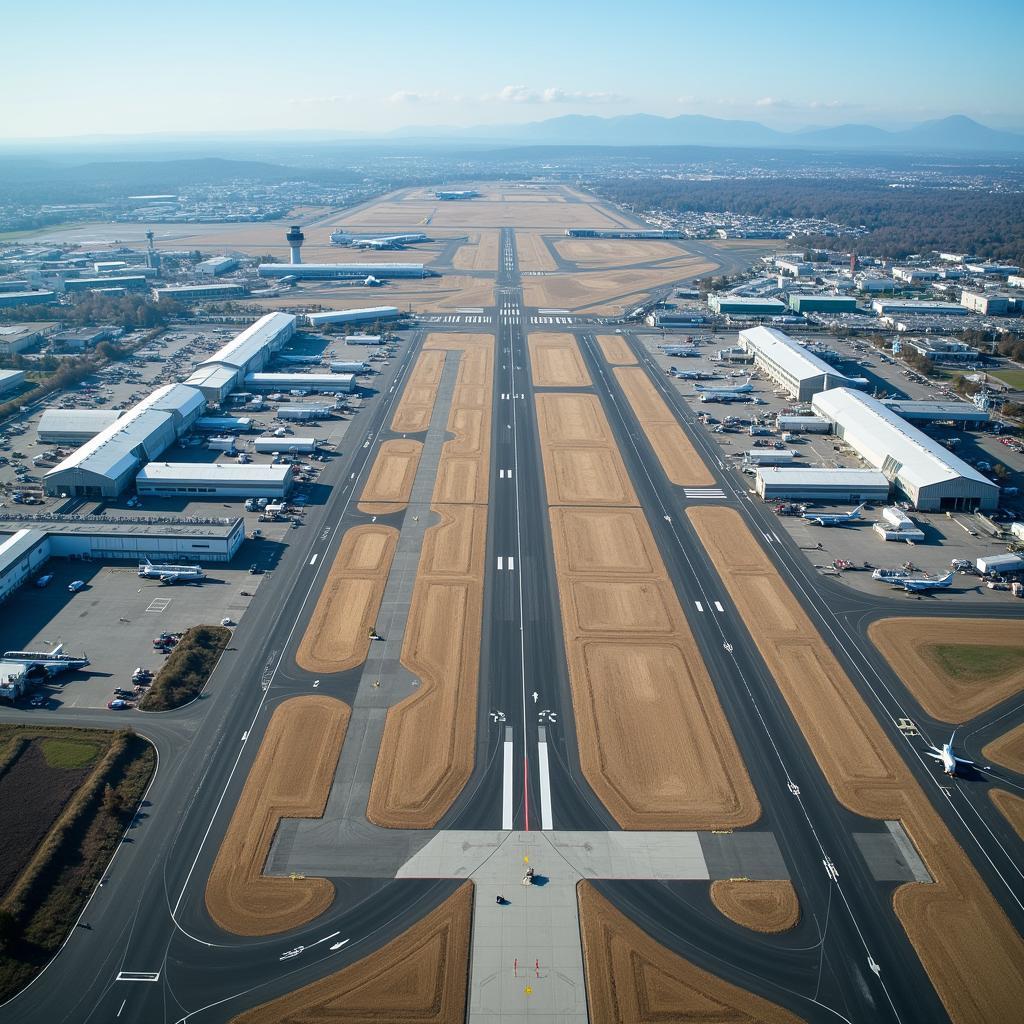The world’s biggest airport is a fascinating topic, sparking curiosity about the sheer scale of these aviation hubs and their crucial role in global connectivity. But defining “biggest” isn’t straightforward. It depends on what you’re measuring: passenger numbers, cargo volume, or physical size? This article will delve into all three aspects, exploring the different contenders for the title of world’s biggest airport and what makes them so impressive.
Defining “Biggest”: Passengers, Cargo, and Area
When discussing the world’s biggest airport, it’s essential to clarify the criteria. Some airports excel in passenger throughput, while others dominate in cargo handling. And then there’s the sheer physical size, encompassing runways, terminals, and supporting infrastructure. Let’s break down these categories.
Passenger Capacity: The Busiest Hubs
In terms of passenger numbers, Hartsfield-Jackson Atlanta International Airport (ATL) consistently ranks near the top. Handling over 100 million passengers annually, ATL demonstrates the logistical marvel required to manage such a high volume of travelers. Other contenders include Dallas/Fort Worth International Airport (DFW) and Denver International Airport (DEN), both boasting impressive passenger statistics. These airports are meticulously designed for efficient passenger flow, with extensive terminal networks and streamlined processes.
 Atlanta Airport Passenger Flow Management
Atlanta Airport Passenger Flow Management
Cargo Giants: The Logistics Powerhouses
When it comes to cargo, Hong Kong International Airport (HKG) often claims the title of world’s biggest airport. Its strategic location and advanced handling facilities make it a global leader in air freight. Memphis International Airport (MEM), a major hub for FedEx, also handles a massive volume of cargo, demonstrating the crucial role of air cargo in global commerce.
Land Area: Sprawling Aviation Cities
For sheer size in terms of land area, King Fahd International Airport (DMM) in Saudi Arabia reigns supreme. Its vast expanse, larger than some small countries, highlights the extensive infrastructure required for a modern airport. Denver International Airport (DEN) also boasts a significant land area, allowing for future expansion and development.
What Makes an Airport “Big”?
Beyond the numbers, several factors contribute to an airport’s “bigness.” These include:
- Infrastructure: Runways, terminals, taxiways, and aprons all contribute to an airport’s capacity and efficiency.
- Technology: Advanced baggage handling systems, security checkpoints, and air traffic control play a crucial role.
- Connectivity: The number of destinations served and the frequency of flights are key indicators of an airport’s reach.
- Amenities: From shopping and dining to lounges and hotels, amenities enhance the passenger experience.
 Overview of Essential Airport Infrastructure Components
Overview of Essential Airport Infrastructure Components
The Future of Big Airports
As air travel continues to grow, the world’s biggest airports will need to adapt and innovate to meet increasing demands. This includes:
- Sustainable Practices: Implementing eco-friendly initiatives to minimize environmental impact.
- Technological Advancements: Utilizing automation and artificial intelligence to improve efficiency and security.
- Enhanced Passenger Experience: Creating seamless and personalized travel journeys.
Conclusion: The Ever-Evolving Landscape of Mega Airports
Determining the world’s biggest airport depends on the metric used. While some airports excel in passenger volume, others dominate in cargo or land area. Regardless of their specific strengths, these aviation hubs play a vital role in connecting the world, and their continued evolution will shape the future of air travel. From passenger flow and cargo handling to sustainable practices and technological advancements, these mega-airports stand as testaments to human ingenuity and the ongoing pursuit of global connectivity.
FAQs about the World’s Biggest Airports
- What is the busiest airport in the world by passenger count? Hartsfield-Jackson Atlanta International Airport (ATL) often holds this title.
- Which airport handles the most cargo? Hong Kong International Airport (HKG) frequently tops the list for cargo volume.
- What is the largest airport in the world by land area? King Fahd International Airport (DMM) in Saudi Arabia claims this distinction.
- What factors contribute to an airport’s size and capacity? Factors include infrastructure, technology, connectivity, and amenities.
- How are airports adapting to the future of air travel? Airports are focusing on sustainable practices, technological advancements, and enhanced passenger experiences.
For further information on specific airports, explore our guides on hotels near stockholm airport and the holiday inn zurich airport.
Need help planning your next trip? Contact us at +13089626264, email us at [email protected], or visit our office at 404 Bothwell St, Oxford, NE 68967, USA. Our 24/7 customer service team is ready to assist you.

